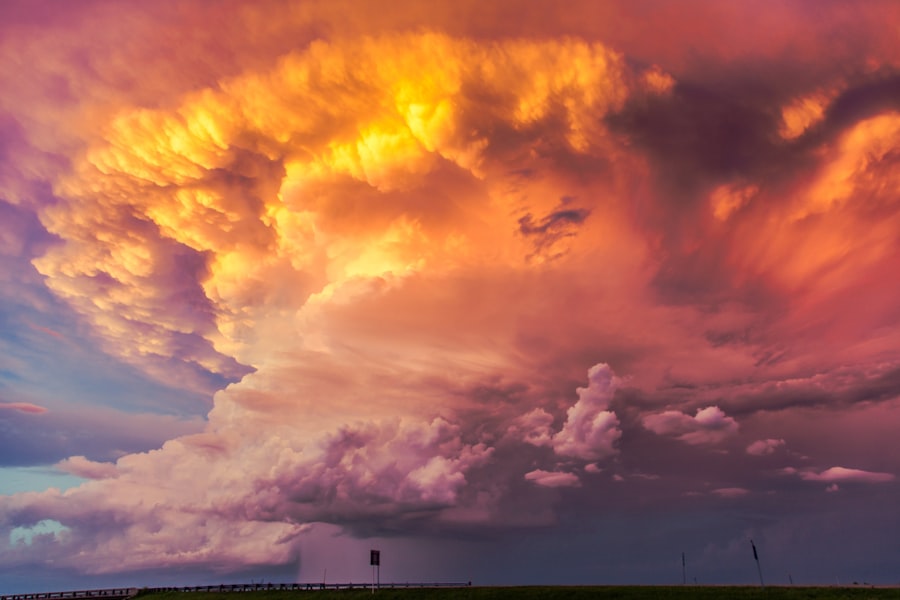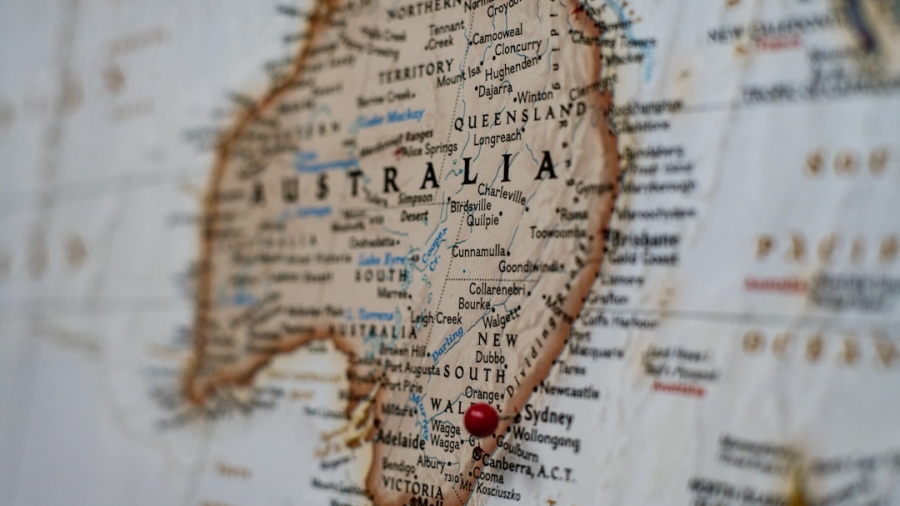In recent years, the intersection of machine learning and meteorology has garnered significant attention, revolutionizing the way we approach weather forecasting. Machine learning, a subset of artificial intelligence, involves the development of algorithms that enable computers to learn from and make predictions based on data. This technology has the potential to enhance the accuracy and efficiency of weather predictions, which are crucial for various sectors, including agriculture, disaster management, and transportation.
Traditional weather forecasting methods, which often rely on numerical weather prediction models and historical data, can be limited in their ability to account for the complex and dynamic nature of atmospheric phenomena. By integrating machine learning techniques, meteorologists can harness vast amounts of data to improve their predictive capabilities, ultimately leading to more reliable forecasts. The importance of accurate weather forecasting cannot be overstated.
It plays a vital role in safeguarding lives and property by providing timely warnings about severe weather events such as hurricanes, tornadoes, and floods. As climate change continues to alter weather patterns globally, the demand for precise forecasting has never been greater. Machine learning offers a promising avenue for addressing these challenges by enabling the analysis of large datasets that traditional methods may struggle to process effectively.
By leveraging machine learning algorithms, meteorologists can identify patterns and correlations within the data that may not be immediately apparent, leading to improved forecasting models that can adapt to changing conditions.
Key Takeaways
- Machine learning plays a crucial role in improving the accuracy of weather forecasting by analyzing large amounts of data and identifying patterns.
- Machine learning models are used to analyze weather data by processing historical weather patterns, satellite imagery, and other relevant data sources to make predictions.
- The benefits of using machine learning in weather forecasting include improved accuracy, better understanding of complex weather patterns, and the ability to make real-time predictions.
- Challenges and limitations of machine learning in weather forecasting include the need for high-quality data, the complexity of weather systems, and the potential for model inaccuracies.
- Successful applications of machine learning in weather forecasting include predicting severe weather events, optimizing energy usage, and improving agricultural planning.
The Role of Machine Learning in Improving Weather Forecasting
Machine learning plays a transformative role in enhancing the accuracy of weather forecasts by enabling the analysis of complex datasets that encompass a wide range of variables. Traditional forecasting methods often rely on physical models that simulate atmospheric processes based on fundamental principles of physics. While these models are essential, they can be computationally intensive and may not always capture the intricate interactions between different atmospheric elements.
Machine learning algorithms, on the other hand, can process vast amounts of observational data from satellites, weather stations, and other sources to identify patterns and trends that inform more accurate predictions. By training these algorithms on historical weather data, meteorologists can develop models that learn from past events and improve their forecasting capabilities over time. Moreover, machine learning can enhance the granularity of weather forecasts by providing localized predictions that account for microclimates and specific geographic features.
For instance, traditional models may provide a general forecast for a region, but machine learning can analyze data at a much finer scale, allowing for predictions that consider local topography, land use, and other factors that influence weather patterns. This level of detail is particularly valuable in urban areas where weather conditions can vary significantly over short distances. By integrating machine learning into the forecasting process, meteorologists can deliver more precise and actionable information to communities, helping them prepare for and respond to changing weather conditions effectively.
How Machine Learning Models are Used to Analyze Weather Data

The application of machine learning models in weather data analysis involves several key steps that transform raw data into actionable insights. Initially, vast amounts of data are collected from various sources, including satellite imagery, radar systems, and ground-based weather stations. This data is often unstructured and heterogeneous, requiring preprocessing to ensure consistency and quality.
Once cleaned and organized, machine learning algorithms can be employed to analyze this data. Techniques such as supervised learning, unsupervised learning, and reinforcement learning are commonly used to identify patterns and relationships within the dataset. For example, supervised learning algorithms can be trained on historical weather data with known outcomes to predict future conditions based on similar input features.
One notable approach is the use of neural networks, particularly deep learning models, which have shown remarkable success in recognizing complex patterns in large datasets. These models consist of multiple layers of interconnected nodes that mimic the way human brains process information. By feeding these networks with extensive weather data, they can learn intricate relationships between various atmospheric variables and improve their predictive accuracy.
Additionally, ensemble methods that combine multiple machine learning models can further enhance forecasting performance by leveraging the strengths of different algorithms. This multifaceted approach allows meteorologists to create robust models capable of adapting to the ever-changing nature of weather systems.
Benefits of Using Machine Learning in Weather Forecasting
The integration of machine learning into weather forecasting brings forth a multitude of benefits that significantly enhance the overall accuracy and reliability of predictions. One of the most prominent advantages is the ability to process vast amounts of data quickly and efficiently. Traditional forecasting methods often struggle with the sheer volume of information generated by modern observation systems.
In contrast, machine learning algorithms excel at handling large datasets, allowing meteorologists to incorporate real-time data into their models seamlessly. This capability enables more timely updates to forecasts as new information becomes available, ultimately leading to better-informed decision-making for individuals and organizations alike. Another key benefit is the potential for improved accuracy in predicting extreme weather events.
Machine learning models can analyze historical data related to severe weather occurrences and identify subtle patterns that may precede such events. By recognizing these indicators, forecasters can issue warnings earlier and with greater confidence. This proactive approach is crucial in mitigating the impacts of natural disasters on communities and infrastructure.
Furthermore, machine learning’s ability to provide localized forecasts enhances its utility for specific sectors such as agriculture, where farmers can make informed decisions based on precise predictions tailored to their geographic location.
Challenges and Limitations of Machine Learning in Weather Forecasting
Despite its numerous advantages, the application of machine learning in weather forecasting is not without challenges and limitations. One significant hurdle is the need for high-quality training data. Machine learning algorithms rely heavily on historical data to learn patterns and make predictions; however, if this data is incomplete or biased, it can lead to inaccurate forecasts.
Additionally, the complexity of atmospheric processes poses another challenge. Weather systems are influenced by a multitude of factors that interact in intricate ways, making it difficult for machine learning models to capture all relevant variables accurately. As a result, there is a risk that these models may oversimplify or overlook critical aspects of weather phenomena.
Moreover, interpretability remains a concern when using advanced machine learning techniques such as deep learning. While these models can achieve impressive predictive performance, they often operate as “black boxes,” making it challenging for meteorologists to understand how specific predictions are generated. This lack of transparency can hinder trust in the forecasts produced by machine learning models and complicate their integration into existing forecasting frameworks.
To address these challenges, ongoing research is focused on improving model interpretability and developing methodologies that combine traditional meteorological knowledge with machine learning techniques.
Examples of Successful Applications of Machine Learning in Weather Forecasting

Several successful applications of machine learning in weather forecasting illustrate its transformative potential within the field. One notable example is IBM’s Watson Weather platform, which utilizes machine learning algorithms to analyze vast datasets from various sources, including satellite imagery and historical weather records. By processing this information in real-time, Watson Weather provides hyper-local forecasts that are tailored to specific regions and even individual neighborhoods.
This level of granularity allows businesses and individuals to make informed decisions based on accurate predictions relevant to their immediate environment. Another compelling case is the work being done by researchers at the University of California, Berkeley, who have developed machine learning models capable of predicting rainfall intensity with remarkable accuracy. By analyzing historical rainfall data alongside satellite observations and atmospheric conditions, these models have demonstrated an ability to forecast precipitation events more reliably than traditional methods.
This advancement has significant implications for water resource management and agricultural planning, as accurate rainfall predictions enable better preparation for both droughts and floods.
The Future of Machine Learning in Weather Forecasting
Looking ahead, the future of machine learning in weather forecasting appears promising as advancements in technology continue to evolve. The increasing availability of high-resolution satellite imagery and real-time observational data will further enhance the capabilities of machine learning algorithms. As these datasets grow larger and more diverse, researchers will be able to develop even more sophisticated models that capture the complexities of atmospheric behavior with greater precision.
Additionally, ongoing improvements in computational power will facilitate the training of more complex algorithms capable of processing vast amounts of information quickly. Furthermore, collaboration between meteorologists and data scientists will play a crucial role in shaping the future landscape of weather forecasting. By combining domain expertise with advanced analytical techniques, interdisciplinary teams can create innovative solutions that address existing challenges while pushing the boundaries of what is possible in predictive modeling.
As machine learning continues to mature within this field, we can expect a new era of weather forecasting characterized by enhanced accuracy, timeliness, and adaptability—ultimately leading to better preparedness for an increasingly unpredictable climate landscape.
If you’re interested in how technology is revolutionizing various fields, you might find the article on how machine learning is enhancing weather forecasting intriguing. For further reading on the latest in technology, consider exploring an article that tracks all the latest consumer technology breakthroughs. This piece provides insights into new gadgets, software, and tech trends that are shaping our daily lives. You can read more about these innovations by visiting this link.
FAQs
What is machine learning?
Machine learning is a type of artificial intelligence that allows computers to learn from data and improve their performance on a specific task without being explicitly programmed.
How is machine learning used in weather forecasting?
Machine learning is used in weather forecasting to analyze large amounts of data such as temperature, humidity, wind speed, and pressure to make more accurate predictions about future weather conditions.
What are the benefits of using machine learning in weather forecasting?
Using machine learning in weather forecasting can lead to more accurate and timely predictions, which can help in better preparation for extreme weather events and reduce the impact of natural disasters.
What are some examples of machine learning techniques used in weather forecasting?
Some examples of machine learning techniques used in weather forecasting include neural networks, decision trees, support vector machines, and clustering algorithms.
How does machine learning improve the accuracy of weather forecasts?
Machine learning improves the accuracy of weather forecasts by analyzing historical weather data and identifying patterns and trends that can be used to make more precise predictions about future weather conditions.
Are there any challenges in using machine learning for weather forecasting?
Some challenges in using machine learning for weather forecasting include the need for large amounts of high-quality data, the complexity of weather patterns, and the need for continuous model training and updating.


